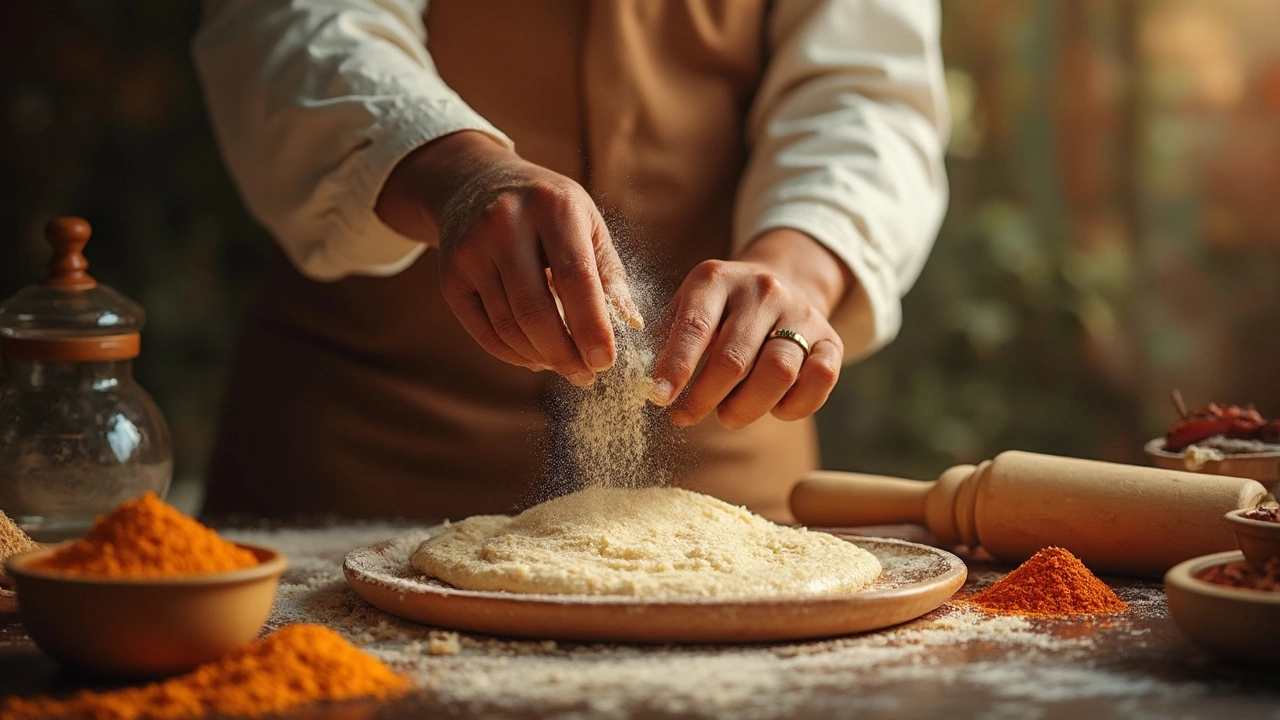Roti Tips: How to Make Soft, Fluffy Chapatis Every Time
When working with roti, a thin Indian flatbread made from whole‑wheat flour and cooked on a hot griddle. Also known as chapati, it is a staple in most Indian households and a great way to scoop up curries and dals.
One of the key players behind a perfect roti is flour, usually atta (whole‑wheat) that provides the right gluten structure for puffing. Adding a splash of oil, such as vegetable or mustard oil, at the right stage keeps the dough supple and the baked roti tender is another classic trick. Some cooks even sprinkle a pinch of baking soda, a leavening agent that can help the roti rise quickly and become airy when they need a faster puff. Together, these ingredients form the foundation of effective roti tips that turn a flatbread from flat to fluffy.
Core Techniques That Make a Difference
Roti tips encompass three core actions: proper kneading, resting, and cooking temperature. Kneading the dough until it feels smooth creates a uniform gluten network, which directly influences how well the roti puffs (proper kneading improves roti puffing). Letting the dough rest for at least 15‑20 minutes allows the gluten to relax, making rolling easier and preventing tears (resting the dough enhances softness). When you finally cook the roti, a hot tawa (griddle) is essential – a cool surface will steam the roti and keep it limp, while a scorching one gives it that quick burst of steam that lifts it into a puff (high heat triggers puffing).
Adding oil at the right moment also matters. If you mix oil into the dough before kneading, it can coat the flour particles and inhibit gluten formation, leading to a denser bread. Instead, drizzle a teaspoon of oil into the dough after the initial knead and before the final rest; this timing lets the gluten develop while still giving the dough a light coating that translates into a softer bite (oil after kneading enhances softness). For those who want an extra lift, a pinch of baking soda or a half‑teaspoon of baking powder can be added during the final mixing step – just enough to create tiny bubbles without giving the roti a soapy taste.
Rolling technique is another hidden hero. Use a lightly floured surface and roll the dough into a uniform circle about 6‑7 inches in diameter. Too thick and the roti won’t cook through; too thin and it will tear or dry out. Press gently, avoid over‑rolling, and aim for a consistent thickness so the heat reaches every part evenly (even rolling supports uniform puffing). If you notice the roti staying flat, check the tawa temperature – a medium‑high heat that sizzles when the roti hits it is the sweet spot.
Even with perfect technique, issues can crop up. Common problems include roti not puffing, sticking to the pan, or turning hard after cooling. If a roti refuses to puff, it often means the dough is too dry or the heat isn’t hot enough. A quick fix is to lightly mist the dough with water before cooking or to increase the tawa temperature by a few degrees. Sticking can be solved by ensuring the pan is well‑heated and lightly greased; a few drops of oil on the surface before placing the roti help create a barrier. For hardness, store cooked rotis in a cloth-lined container to retain moisture, or re‑heat them with a splash of water on the tawa to revive softness.
All these roti tips weave together to give you a reliable method for soft, fluffy flatbreads every time you step into the kitchen. Below you’ll find a curated set of articles that dive deeper into each of these aspects – from why oil matters, to the science behind baking soda, to troubleshooting flat chapatis that just won’t puff. Keep reading to turn every roti session into a quick, tasty success.

Does Baking Soda Make Roti Soft?
Making the perfect soft roti is an art, and many wonder if baking soda can be the secret ingredient to achieve that fluffy texture. This article explores the effects of baking soda on dough and shares practical tips on achieving soft, pliable rotis. We delve into experimenting with various dough ingredients while understanding baking soda's role in the process. Additionally, we discuss alternative methods and common pitfalls in roti-making. Get ready to mix, knead, and flip your way to softer rotis!